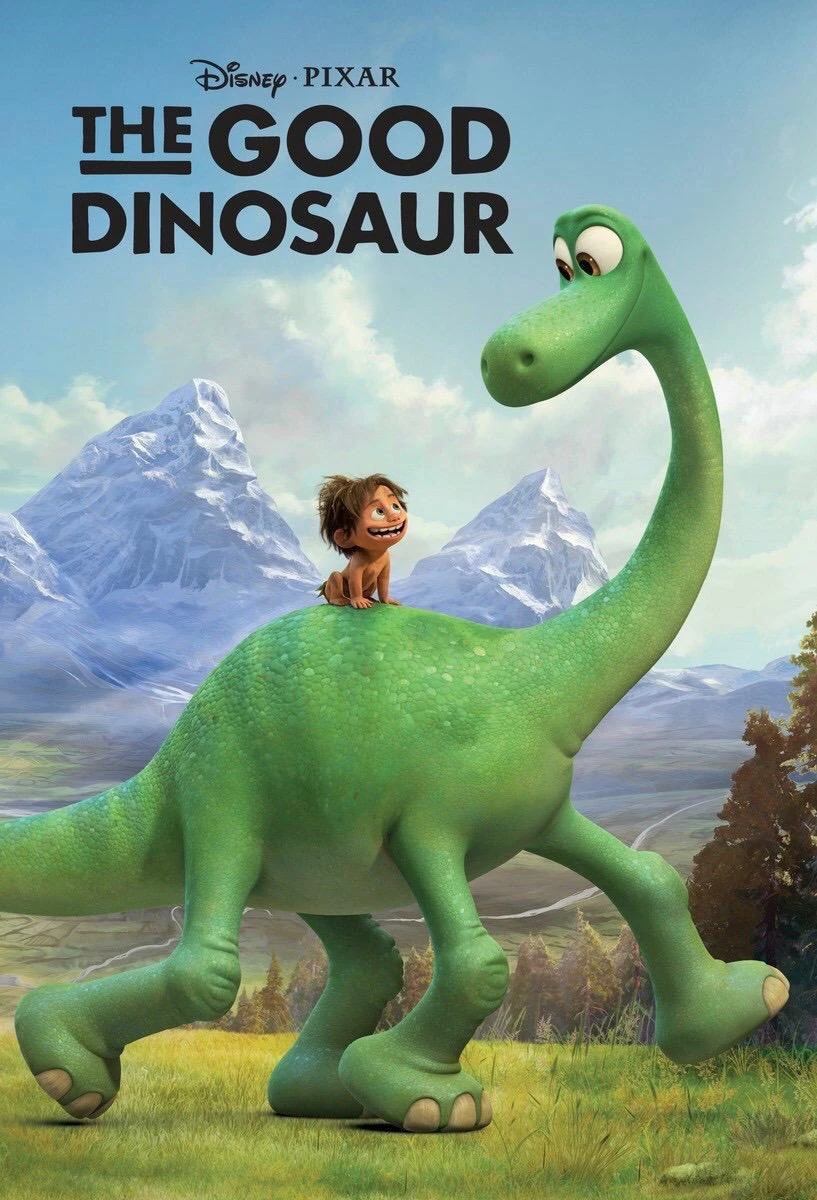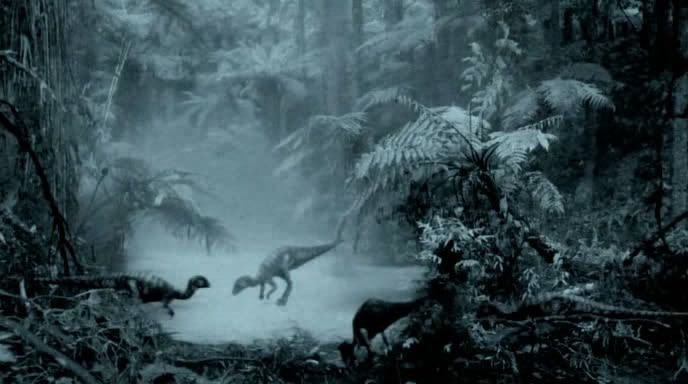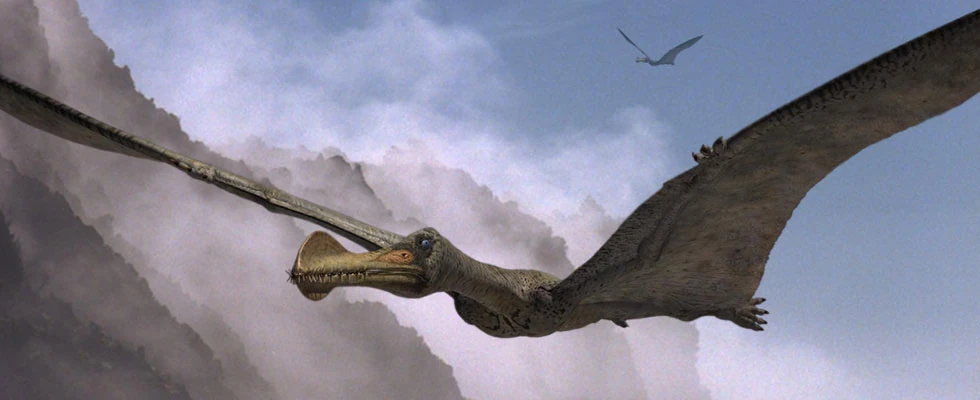*Note this is a critical look at the movie reflecting the personal opinions of the author. If you do not like opinions, do not read.
But, as time went on things started getting a bit weird. As we started to learn more about Arlo and the story of the film, the less invested I was. It didn't help that we learned that the "feathered dromaeosaurids" mentioned in some interviews looked like they had their feathers hot glue-gunned onto their body, or that we learned that the T. rex for some reason gallop like horse. (The heck?)
Still, the rumors didn't deter me from going out to try it. So last week right before finals (when I probably should've been studying) I went to the theater and tried to watch the film with an open mind. The lights dimmed down, I had my drink in-hand, and I was excited to see the story play out.
And it was the worst Pixar movie I've ever seen.
Note that that still means it's millions of miles ahead of many other movies, and that I still somewhat enjoyed it, but still, getting the title of "worst Pixar movie" can't be a good thing, and a quick Google search seems to suggest I'm not alone on this. IGN is saying The Good Dinosaur might be "Pixar's first bomb," and Rotten Tomatoes gave the film a score similar to Jurassic World when it first came out, and substantially lower than almost all other Pixar works. What happened?
(Spoilers)
Well, to sum up the story in it's purest, The Good Dinosaur is a movie about a boy and his dog, only that the boy is an Apatosaurus named Arlo and the dog is a caveboy named Spot. Ok.... The Apatosaurus is born into a family of... farmers? But one day his dad gets killed in a flood (cause Disney hates parents), and shortly afterwards, Arlo is accidentally swept downriver into an unfamiliar landscape and has to learn how to survive and make it home with the help of his cave-dog-man Spot. Along the way they meet a crazy pet-collecting ceratopsian, a cult of pterosaurs which worship the storms they follow, and a pack of cowboy T. rex. (One of which is voiced by Sam Elliott.)
On paper this sounds like a really crazy, creative film, but in execution, it falls a bit flat. Most Pixar movies have an overarching narrative theme to them, or reasons behind their creative dives, and even small details might turn out to have high importance or meaning later on. In this film, it's creative, but it doesn't mean anything. There's no reason why Arlo is part of a family of farmers from a storytelling perspective, or why the ceratopsians collects pets, nor why the T. rex are cowboys. I'd be fine with that if this was any other movie, but this is Pixar. Pixar is great at constructing good overarching messages like that.
Moreover, most of the characters in this film aren't that great. Arlo is the stereotypical kid that needs to learn how to be brave and "earn his mark" (that's literally the term they use). His father, during the time that we see him, is the typical father that pushes him to face his fears. His mother and siblings are... just kinda there, and most of the side-characters he encounters on the way (with the exception of the T. rex family) are bland and forgettable. We don't even get to learn much about Spot in all the time we see him. We learn that he's been on his own for years ever since he lost his own family, but since his only real way of communicating is through barks and panting, it doesn't allow for much development. This also means there's some awkward developments in the story too. For example, Arlo first hates Spot's guts during the first part of the movie cause he blames him as the reason that his father died trying to save his life, and then literally after Spot shows Arlo where to find food, they suddenly become best buds.
Finally, it also doesn't help that the story in in the film is something we've seen a million times before in other, better works. When you get to the heart of it, this is also yet another "young dinosaur going on a journey" movie we've seen in other works, like Don Bluth's Land Before Time, Disney's Dinosaur, the Talking- sorry, Walking With Dinosaurs movie, etc. We really didn't need another movie like this. If it was just that it wouldn't have been too bad, but at the same time, I can recall exact scenes from this film which were almost identical to parts of those others. It definitely heavily borrowed a number of plot elements from other media, and not in a good way.
(Spoilers End)
When all is said and done, I guess it's still not a "bad" movie. The animation is undoubtedly the best the studio has ever put out, the story is passable, and it is creative, even if that creativity doesn't get to shine. It's just a bit disappointing considering all that I've heard about this film and got excited up until now, especially with Pixar having just put out one of the best-received films the company ever made just this year. Really a big shame if you ask me.
This isn't all I've got to say about this movie though. Oh no. In fact, I've been meaning to talk about the problems I, and I think many other paleontology enthusiasts like myself have noticed with dinosaur media in recent years. I hope to cover those topics in some new blog posts in the future, as well as possible ways to fix this loop we've been stuck in concerning dinosaur movies. Hopefully, you'll find the time to put up with me the whole way through.
Cheers!
P.S. I know this wasn't really an analytical look at the film from a paleontological prospective, like making fun of how the pterosaurs behaved or looked, but I thought that would be a bit difficult since we're talking about a movie where the Apatosaurus are farmers, the T. rex are cowboys, and the humans are like dogs. If you want to read something more of that nature, Brian Switek wrote some stuff up on Slate.com and Gizmodo, and Jaime Headden wrote a semi-review, semi-analysis of the film on his blog. There's also a video by The Doodling Dino where he redesigns Arlo to better fit the scientific consensus of sauropods, alongside some talk about the movie. Hopefully you'll find something to your liking. :)




